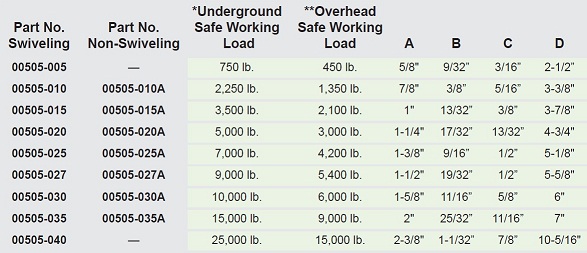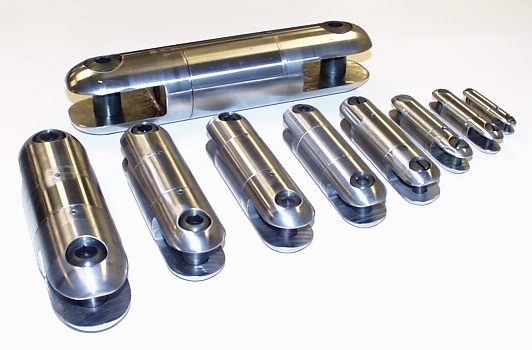DCD Design provides two Safe Working Load limits for our 00505 Series Line Swivels, depending on whether you’re pulling Underground or Overhead. What’s the difference? RISK.

A Safe or Maximum Working Load without a Safety Factor is incomplete – you don’t know where you stand. One company’s Overhead Swivels may only have a 3:1 Safety Factor, when every other component has been rated 5:1. Where’s the weak link?
When you’re stringing overhead lines, a 5:1 Safe Working Load is typically chosen to suit the safety factors applied to pulling rope and grips. I say “typically” because safety factors and the resulting safe working loads are user-dependent.
Occupational safety requirements are a minimum level of protection. Risk management demands a greater level of protection if a failure will have catastrophic consequences.
You don’t want to see a failure in an overhead job because when things fall down, they land on other things! You can reduce the risk of failure by choosing a larger safety factor, but you’re limiting your maximum load. There has to be a compromise!
Underground, a 3:1 Safe Working Load can typically be applied. A failure is still possible, but the risk of damage or injury is reduced. You can “afford” to increase your maximum load. So the same Line Swivel can have two Safe Working Loads, depending on the application.
If you’re comparing line stringing swivels for overhead use, know the Safety Factors built into your equipment and make sure you’re getting the whole story. DCD Line Swivels have a happy ending.

Phone:
1-888-794-8357
Email:
sales@dcddesign.com


Leave A Comment